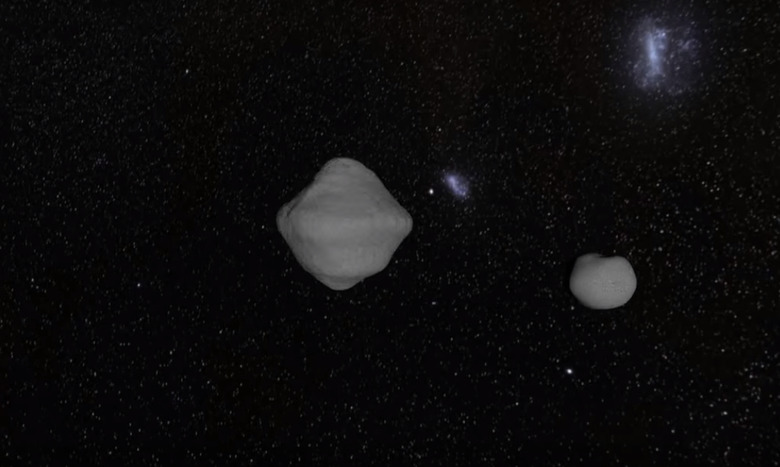NASA Will Test Asteroid Defenses By Slamming A Spacecraft Into A Space Rock In 2022
If Earth were ever to be threatened by a large space rock — and it definitely will at some point in the future — humanity is going to need to have a plan. Astronomers know this, which is why simulated exercises like the one that took place last week are so important, but actually testing possible defense strategies is something that still needs to happen.
In 2021, NASA will launch the DART spacecraft. DART, which stands for Double Asteroid Redirection Test, is designed to slam directly into a space rock known as Didymos B, which is the smaller half of a binary asteroid, the other half of which is known as Didymos A. The results from the test could shape Earth's planetary defense systems for decades to come.
In a new blog post, NASA offers some new details about the mission and its ultimate goal. At the moment, the biggest focus for NASA is to learn as much about the asteroid pair as possible, in the hopes that observations made after the impact will paint a clear picture of how such a mission could potentially save Earth from a killer asteroid in the future.

The Didymos twins pose no threat to Earth, which actually makes them great candidates for study. The smaller Didymos B is orbiting its big brother, and the DART mission will attempt to change its course ever so slightly.
In a real-world planetary defense scenario, pushing an asteroid off of a collision course with Earth would need to be done well in advance of a possible impact. The idea being that a small nudge, made years ahead of time, would be magnified over time, hopefully allow mankind to avoid a catastrophe.
The mission, which will launch in 2021, won't actually reach its target until 2022. When it does, it will have one shot to nail the impact and, if it misses, years of work will have gone down the drain. If NASA pulls it off, it will be a monumental achievement and the data gathered could one day save Earth from serious hardship.
